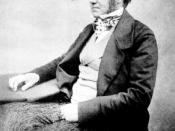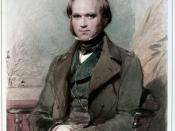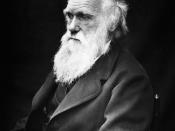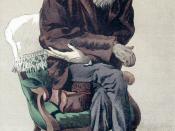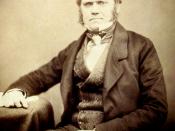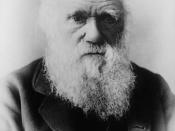Evolution by Natural Selection: Charles Darwin was the first to proove ascientifically testable explanation for the diversity of life, or, in other words, why thereare so many different kinds of living things on Earth (StateUniversity.com, 2009).
Natural selection means individual organisms with similar traits are more likely tosurvive and reproduce than those with different traits. Natural selection works on the allof individual, but only the heritable component of a trait will be passed on to the nextoffspring in line. Inheritable traits are more common in the next generation in line. Whengiven enough time, this passive process can result in adaptations and speciation(StateUniversity.com, 2009). Natural selection is one of the cornerstones of modernbiology. This is only one of Darwin's many theories. Today, evolution by naturalselection is accepted by all scientists as biologyÃÂs most important theory. Most scientistsagree that contemporary biology began when Darwin published his book, the origin ofSpecies, in 1859.
Inheritance and genes is another cornerstone of biology. At the same time that Darwinwas created his theory of biological evolution, Gregor Mendel, was a monk wholived in a monastery in Eastern Europe, and wondered how traits from parents areinherited by offspring? The principles of inheritance were from his experiments withpea plants and he found that they were successful, and applied to all organisms. Mendelproved that the traits, or characteristics, of organisms pass from one generation to thenext by means of hereditary ÃÂfactors,ÃÂ which are now known as genes. Darwin andMendel published their first significant findings within a few years of each other, butunlike Darwin, MendelÃÂs results were largely ignored for the first 35 years. They wererediscovered in the early 20th century and have since become one of the cornerstones ofmodern biology.
Cell theory is another cornerstone of Biology. Matthias Schleiden and TheodorSchwann, were contemporaries of both Darwin and Mendel, and they proposed the celltheory. The cell theory states that all organisms are composed of cells and that all cellscome from preexisting cells (Wisegeek.com. 2009). They realized that the cell is thesmallest unit capable of exhibiting all of the characteristics of life. Unlike DarwinÃÂs andMendelÃÂs theories, this one owes its discovery to technology. Cells could not be observeduntil after the microscope was developed and refined around the beginning of the 17thcentury. People could see things not visible to the naked eye. The creation ofthe electron microscope, has improved on the theory, and has continued to improve. Asmore and more living material has been observed at higher and higher magnifications,much more has been learned about cells and the cell theory. The modern cell theoryincludes the two basic components of the classic cell theory and then adds the following:organisms can be unicellular, composed of one cell, or multi-cellular, composed of manycells. When cells divide, the hereditary information they contain, called DNA, is passedfrom cell to cell. All cells are made up of basically the same composition.
ReferencesStateUniversity.com. (2009). natural selection - General principles, Nomenclature and usage.
Retrieved on November 4, 2009 fromhttp://encyclopedia.stateuniversity.com/pages/15738/natural-selection.htmlWisegeek.com. (2009). What is Cell Theory.
Retrieved on November 4, 2009 fromhttp://www.wisegeek.com/what-is-the-cell-theory.htm
